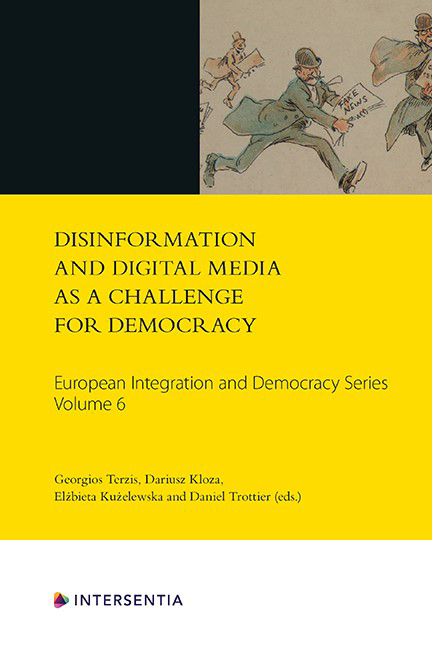Book contents
- Frontmatter
- Foreword: Fooling All of the People All of the Time: Democracy in the Age of Fake News
- Introduction: ‘They All Hear “Ping” at the Same Time’
- Contents
- List of Abbreviations
- List of Contributors
- PART I THEORETICAL APPROACHES TO AND THE CONCEPTUALISATION OF DISINFORMATION
- PART II EXPERIENCE OF DEALING WITH DISINFORMATION
- PART III SOLUTIONS TO DEAL WITH DISINFORMATION AND THEIR CRITIQUE
12 - Performance Analysis of Fact-Checking Organisations and Initiatives in Europe: A Critical Overview of Online Platforms Fighting Fake News
Published online by Cambridge University Press: 26 May 2021
- Frontmatter
- Foreword: Fooling All of the People All of the Time: Democracy in the Age of Fake News
- Introduction: ‘They All Hear “Ping” at the Same Time’
- Contents
- List of Abbreviations
- List of Contributors
- PART I THEORETICAL APPROACHES TO AND THE CONCEPTUALISATION OF DISINFORMATION
- PART II EXPERIENCE OF DEALING WITH DISINFORMATION
- PART III SOLUTIONS TO DEAL WITH DISINFORMATION AND THEIR CRITIQUE
Summary
INTRODUCTION
The advent of information and communication technologies opened up a myriad of opportunities for people to create and disseminate content through multiple services and platforms. However, not always and not all of the actors take advantage of this bright side of the Internet. Very often (purposefully or not), content of dubious veracity or unverified origin is also created and spread. This type of content is what has popularly become classified as ‘information pollution’ , for which fake news is the most common expression and is often interchangeably used for any type of information pollution.
Fake news is often simply defined as spreading false content for political purposes . However, from a broader perspective, fake news may refer to rumours, gossip or generally information that is not checked, is not objective and, in the worst-case scenario, is completely misleading. The most controversial property of fake news is their potential to influence how society as a whole or groups within society behave and perceive reality. This not only impacts the quality of contents on the Web, but also undermines the trust of the users in the platforms, in the online applications and in the other users creating and sharing content. As reported in the Reuters Institute Digital News Report, only a quarter (24 per cent) of the respondents think that'social media do a good job in separating facts from fiction, compared to 40% for the news media’. The data cited points out that ‘users feel the combination of a lack of rules and viral algorithms are encouraging low quality and allowing fake news to spread quickly’. In that regard, Vertesi also calls for the need to pay more attention to the topic of digital information technology in daily life and in knowledge work within science and technology studies.
However, these developments in the online world do not imply that traditional media are immune to fake news reporting. The media presentation of reality and the quality of journalistic work have in particular been largely questioned because distrust in the media is on the rise.
- Type
- Chapter
- Information
- Disinformation and Digital Media as a Challenge for Democracy , pp. 217 - 246Publisher: IntersentiaPrint publication year: 2020
- 1
- Cited by

